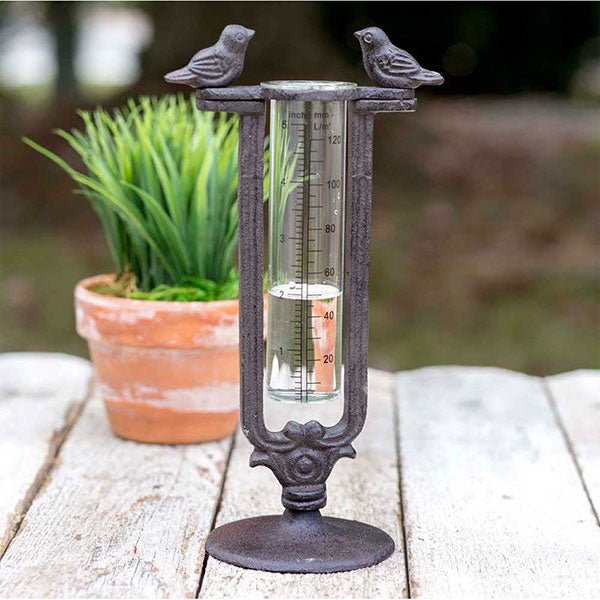DIY Rainfall Gauge: Basic Steps to Make Your Own
Producing your very own Do it yourself rain gauge is a efficient and basic way to videotape and determine precipitation. With simply a couple of typical products and some standard actions, you can easily construct your own rain gauge at home. Let's get started on making your DIY rain scale today!
Gather Products
To start creating your do it yourself rainfall scale, collect all the necessary materials using a detailed listing of things. Having the appropriate products accessible will certainly make certain the effective production of your rainfall scale and enable for exact dimensions of rains. To start with, you will certainly require a clear plastic container or cyndrical tube, such as a plastic bottle or jar. Make sure the container is transparent to ensure that you can easily see the water level inside. Next, you will certainly call for a ruler or gauging tape to note the increments on the container. This will certainly allow you to measure the amount of rains precisely. In addition, you will need an irreversible marker or water-proof tape to mark the dimensions on the container. This will certainly make certain that the markings stay noticeable also when exposed to rain. Lastly, you will require a durable base or risk to safely hold your rain scale in position. This can be a wooden or steel stake that can be put into the ground or a tough flat surface area to offer security. Gathering these products in advance will certainly improve the construction procedure and ensure that you have every little thing you need to develop your own do it yourself rain scale.
Prepare the Container

Mark the Dimension Increments
To accurately gauge the quantity of rainfall, properly marking the measurement increments on your do it yourself rain scale is essential. Without clear and specific markings, it would be hard to figure out the exact quantity of rainfall accumulated in your rain scale. Here are the actions to mark the dimension increments on your rain scale.
First, select the unit of dimension that you wish to utilize. One of the most typical units for determining rainfall are millimeters and inches. Once you have actually chosen the system, use a long-term marker or water resistant paint to note the increments on the side of blog here your rain scale. For inches, you can mark every quarter inch or every fifty percent inch, depending on your choice. For millimeters, you can note every 10 millimeters or every 20 millimeters.
When noting the increments, it is essential to make certain that they are evenly spaced and clearly noticeable. Make use of a ruler or determining tape to make certain precision and consistency. Furthermore, make certain that the markings are immune to fading or abrading, as exposure to the components may trigger them to wear away over time.
Location the Rainfall Scale Outdoors
The rainfall scale must be put outdoors to properly gather rainfall data. The location selected for the rain gauge should be totally free and open from any type of obstructions that could potentially influence the dimension of rains. The Rain Gauge.
Furthermore, it is important to position the rain gauge on a stable surface, such as a degree ground or a strong article. This will prevent any activity or tilting of the scale, which could lead to imprecise dimensions. It is likewise recommended to avoid positioning the scale near any type of sources of man-made water, such as sprinklers or drainage systems, as this could hinder the precision of the dimensions.
Monitor and Document Rainfall Data
Routine tracking and recording of rainfall information is essential for precise data analysis and interpretation. By tracking rains measurements, you can acquire important understandings into climate patterns, environment trends, and water source management. To properly keep track of and videotape rainfall information, it is very important to develop a routine and keep constant practices.
First of all, make certain that your rain scale is positioned in an open area far from obstacles such as trees or buildings that might obstruct rainfall. Additionally, ensure the rainfall gauge is level and firmly anchored to stop any kind of movement that might influence the accuracy of the measurements.

When tape-recording the rainfall information, it is essential to keep in mind the day and time of click resources each dimension. Make use of a leader or a gauging stay with figure out the rains deepness in the rainfall scale, and document this info properly.
To make sure the accuracy of the measurements, it is recommended to clear the rainfall scale after each recording. This will certainly stop any type of overflow or evaporation from affecting succeeding dimensions.
Final Thought
In conclusion, developing a DIY rain scale is a practical and simple means to check and tape rainfall information (The Rain Gauge). By following the actions described in this write-up, you can quickly gather materials, prepare the container, note the measurement increments, my company and put the rain scale outdoors. Frequently keeping an eye on and tape-recording rains data can supply valuable info for various functions
Having the appropriate materials on hand will certainly ensure the successful creation of your rainfall scale and enable for exact measurements of rainfall.To properly measure the amount of rains, accurately marking the dimension increments on your Do it yourself rain gauge is crucial.The rain scale should be put outdoors to properly collect rainfall information. The area chosen for the rain gauge must be open and free from any kind of blockages that could possibly impact the dimension of rains.In verdict, creating a DIY rain gauge is a practical and easy method to keep an eye on and videotape rains information.